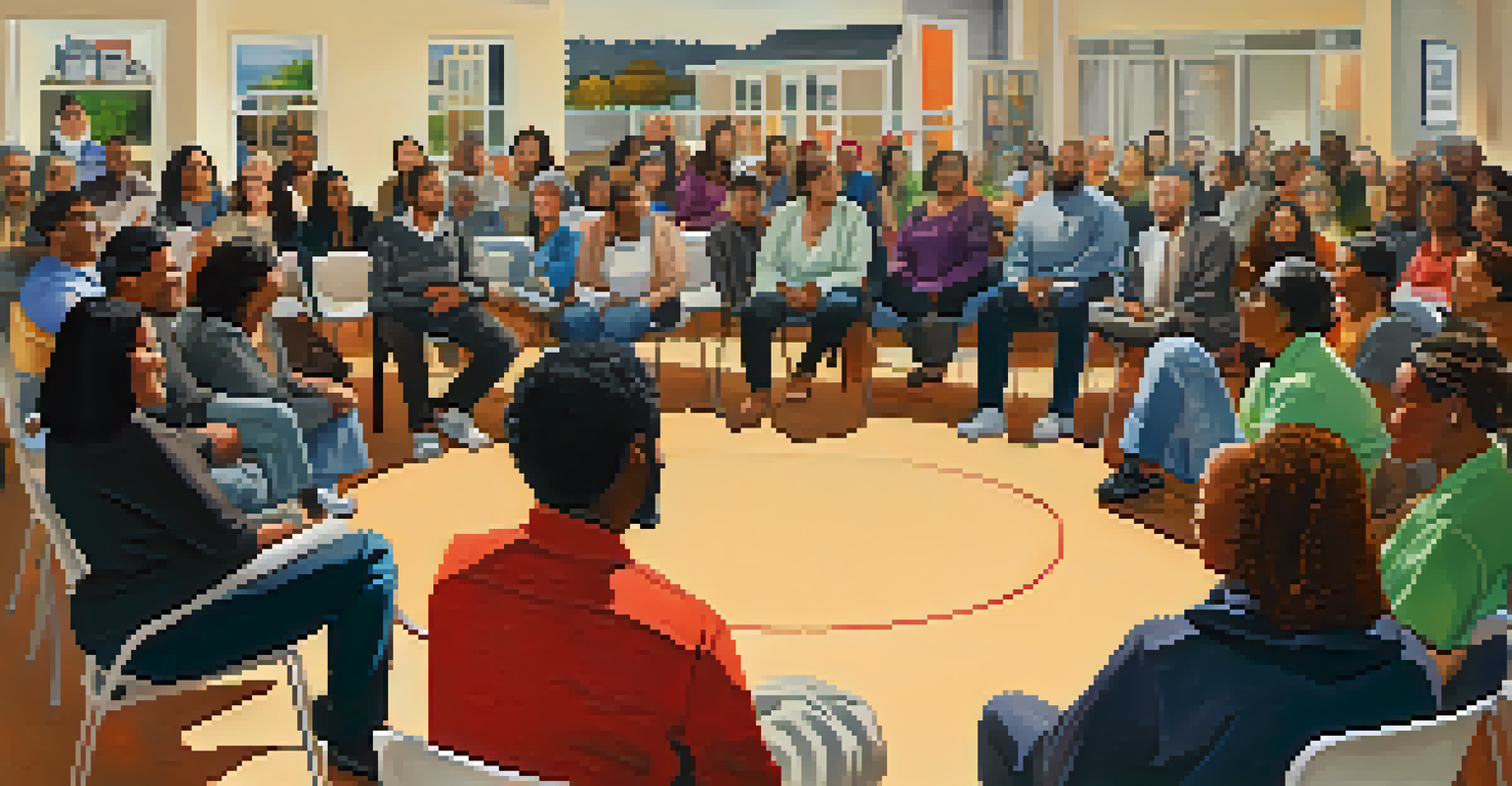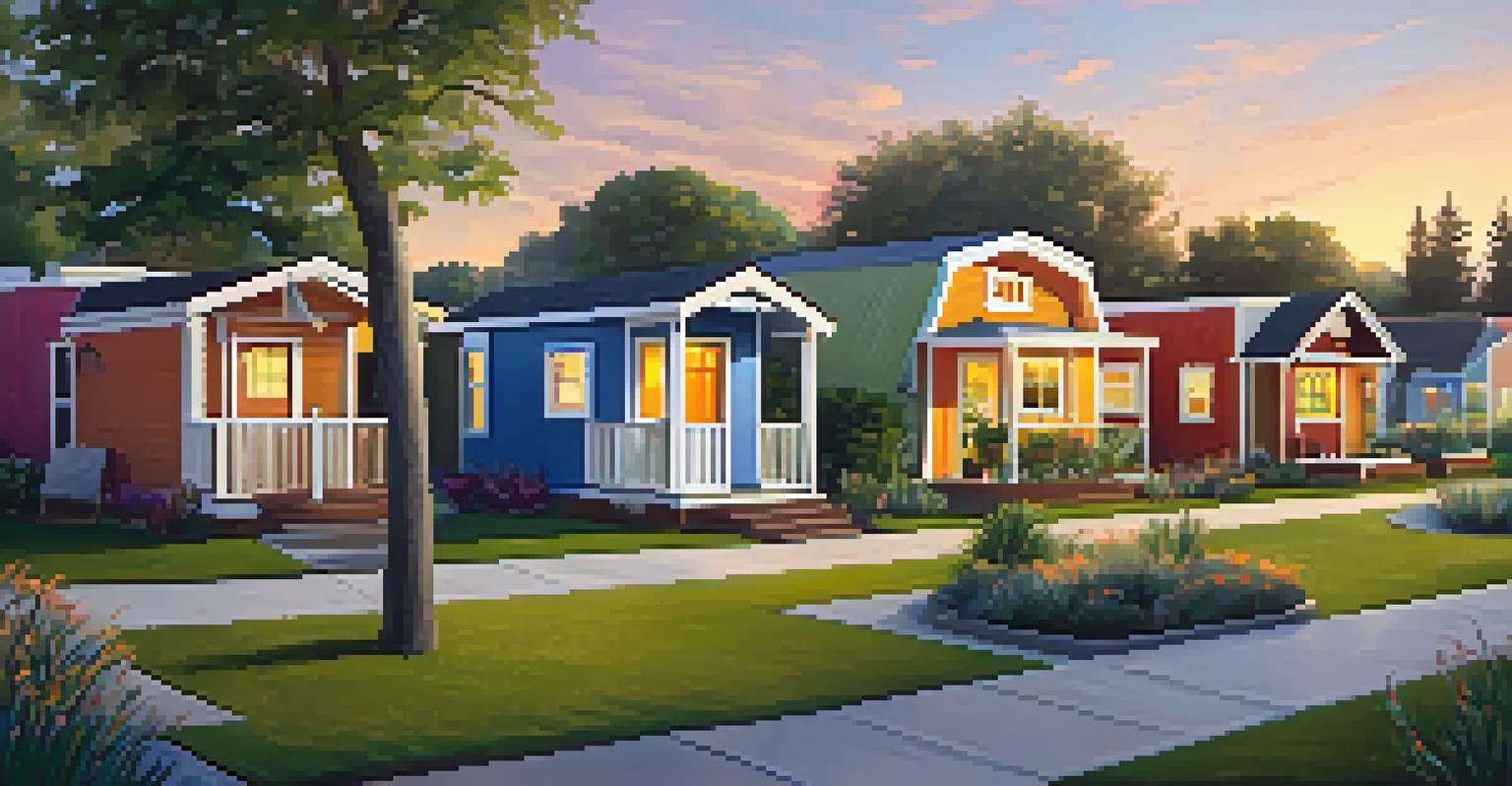Barriers to Affordable Housing in San Jose: A Community Focus

Understanding the Housing Crisis in San Jose
San Jose is facing a significant housing crisis, characterized by soaring prices and a shortage of affordable options. The tech boom has attracted many new residents, driving demand for housing to unprecedented levels. As a result, many locals find themselves priced out of the market, struggling to find suitable living conditions. This situation has sparked widespread concern about the community's long-term viability and diversity.
The greatest challenge of the housing crisis is ensuring that everyone has access to a safe and affordable home.
The city's rapid growth has outpaced the development of affordable housing, leading to a mismatch between income levels and housing costs. Families and individuals earning moderate wages often find themselves in a tough spot, with limited options that fit their budget. This imbalance creates a ripple effect, impacting everything from local schools to community services, as residents face displacement and instability.
To address this crisis, it's crucial to examine the underlying barriers that contribute to the lack of affordable housing. By understanding these obstacles, we can work towards solutions that foster a more inclusive community where all residents have access to safe and affordable homes.
The Role of Zoning Laws in Housing Affordability
Zoning laws play a pivotal role in shaping a city's housing landscape, including in San Jose. These regulations dictate how land can be used, influencing the types of housing that can be built and where. In many cases, restrictive zoning can limit the availability of affordable housing options, pushing prices higher and reducing diversity within neighborhoods.

For instance, single-family zoning is prevalent in many parts of San Jose, which can stifle the development of multi-family units that often provide more affordable living spaces. As a result, potential housing developments may be stalled or altered, leading to fewer options for residents. This situation creates a barrier for developers who want to contribute to solving the housing crisis but are constrained by outdated regulations.
Housing Crisis in San Jose
San Jose faces a severe housing crisis due to high demand and limited affordable options, impacting the community's diversity and stability.
Advocating for zoning reform is essential to promote more inclusive housing policies. By adjusting these laws to allow for a wider range of housing types, San Jose can begin to alleviate some of the pressure on its housing market, ultimately benefiting its residents.
High Construction Costs and Their Impact
One of the significant barriers to affordable housing in San Jose is the high cost of construction. Building materials, labor, and land prices have seen a dramatic increase, making it challenging for developers to create affordable units. This reality often results in projects being shelved or scaled back, as developers struggle to meet financial viability while adhering to rising costs.
Affordable housing is not just a matter of economics; it's a matter of social justice.
Additionally, the lengthy approval processes for new developments can further exacerbate these challenges. When projects take longer to get approved, the costs associated with delays can accumulate, ultimately pushing potential affordable housing projects out of reach. This cycle of high costs and prolonged timelines creates a frustrating barrier for both developers and those in need of housing.
To create a more sustainable housing market, it's vital to explore innovative financing solutions and streamline approval processes. By addressing these economic barriers, San Jose can support the development of affordable housing that meets the needs of its growing population.
Community Opposition to New Developments
Community opposition can significantly hinder the development of affordable housing in San Jose. Many residents express concerns about how new projects might impact their neighborhoods, fearing changes to the character or safety of their communities. While these concerns are valid, they often result in resistance to much-needed housing solutions.
NIMBYism, or 'Not In My Backyard' attitudes, can stall or completely derail housing projects that would provide essential affordable options. This phenomenon can create a paradox where community members desire affordable housing but oppose the very developments that could help achieve it. Such opposition can lead to a lack of progress and exacerbate the housing crisis.
Zoning Laws Affect Housing Supply
Restrictive zoning laws in San Jose limit the development of affordable housing, exacerbating the affordability issue.
Fostering open dialogue and education about the benefits of affordable housing is crucial. By involving community members in discussions and addressing their concerns, San Jose can build support for developments that enhance the community while providing necessary housing options.
The Importance of Public Funding and Support
Public funding plays a critical role in promoting affordable housing initiatives in San Jose. Government resources can help subsidize construction costs, making it more feasible for developers to create lower-cost units. Without adequate funding, many potential projects may never break ground, leaving residents without affordable living options.
Programs aimed at supporting low-income families, such as housing vouchers and land trust models, can also alleviate some of the pressures faced by vulnerable populations. These initiatives provide a safety net for those in need, ensuring that everyone has access to safe and stable housing. However, securing ongoing funding and political support for these programs remains a challenge.
Advocating for increased public investment in affordable housing is essential for long-term solutions. By prioritizing funding and support for these initiatives, San Jose can move toward a more equitable housing landscape that benefits all residents.
Impact of the Tech Industry on Housing Demand
The tech industry has undeniably shaped San Jose's housing market, driving demand to new heights. As major tech companies continue to expand, they attract a skilled workforce eager to move to the area, creating competition for housing. This influx has resulted in skyrocketing housing prices, which can price out long-time residents and lower-income families.
While the economic benefits of the tech industry are clear, the accompanying housing challenges cannot be overlooked. The demand for housing has outstripped supply, leading to a situation where many residents struggle to find affordable homes. This imbalance raises questions about the sustainability of the local economy and the well-being of its residents.
Need for Public Funding Support
Public funding is crucial for subsidizing affordable housing initiatives, helping to create lower-cost units for residents in need.
To create a balanced approach, it's crucial for tech companies and local leaders to collaborate on housing solutions. By investing in affordable housing and supporting community initiatives, the tech industry can play a positive role in addressing the housing crisis.
Exploring Innovative Solutions for Affordable Housing
Finding innovative solutions to the affordable housing crisis in San Jose is essential for creating lasting change. Approaches such as modular housing and tiny home communities have gained traction as cost-effective alternatives to traditional construction methods. These options can provide quick, affordable living spaces that help address immediate housing needs.
Additionally, community land trusts offer a unique model that allows residents to have a stake in their housing. By removing land from the speculative market, these trusts can help maintain affordability over the long term, ensuring that homes remain accessible to low- and moderate-income families. This innovative approach fosters community engagement and investment in local neighborhoods.

By embracing creative solutions and prioritizing community involvement, San Jose can pave the way for a more affordable housing landscape. This collaborative approach can help ensure that all residents have access to safe and stable homes, ultimately strengthening the community as a whole.